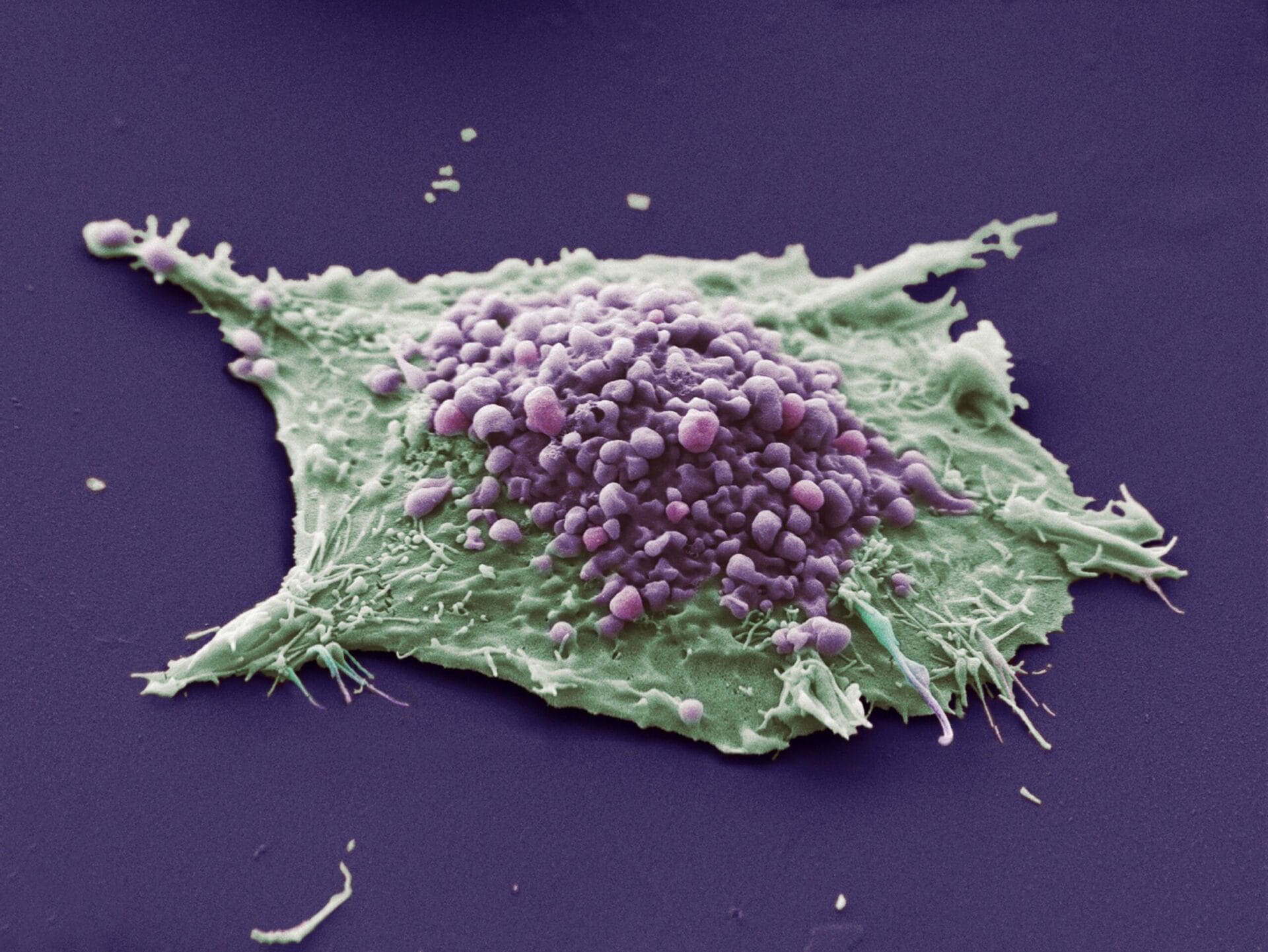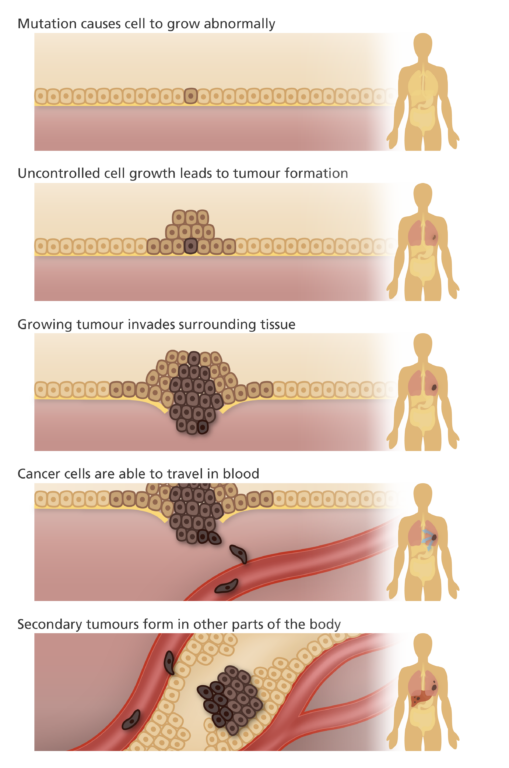Is cancer a genetic disease?
Image credit: Anne Weston, Francis Crick Institute / via Wellcome Collection

Cancer is the most common human genetic disease. The transition from a normal cell to a malignant cancer is driven by changes to a cell’s DNA, also known as mutations.
- Uncontrolled cell growth is the hallmark of cancer.
- The rate and timing of cell division in the body is normally highly regulated. However, if the genes that directly regulate the cell cycle are mutated, this regulation is lost and uncontrolled cell division occurs
How does cancer occur?
- The cells in the human body work together, dividing and reproducing in a strictly controlled and coordinated fashion.
- DNA replication is an essential part of cell division, whereby the cell makes an identical copy of its genome before it divides.
- Mistakes or ‘mutations’ can occur during DNA replication, changing the genome of the new cell being made.
- Most of these mistakes are quickly repaired by the cell’s machinery, but sometimes mistakes are missed and the change in the DNA remains.
- If these mutations occur in genes that control growth (proto-oncogenes and tumour suppressor genes) uncontrolled cell growth can occur, which can lead to tumour formation and cancer.
- Proto-oncogenes encourage the cell to multiply. If these genes become mutated they tell the cell to multiply all the time and are then called oncogenes.
- Tumour suppressor genes stop the cell from multiplying. If these genes are mutated and stop working, the cells may carry on multiplying.
- To become cancerous, a cell must acquire mutations in several growth-controlling genes.
- Mutations can accumulate over many years before a cell becomes cancerous. This is why most types of cancer are more common in older people.
The cancer cycle
The rate and timing of cell division in the body is normally highly regulated. However, if the genes that directly regulate the cell cycle are mutated, this regulation is lost and uncontrolled cell division occurs:
- Numerous mutations in genes controlling the cell cycle enable cells to multiply out of control.
- This leads to a mass of cells that continues to grow and grow, eventually developing into a tumour.
- Initially the tumour is confined to the tissue in which it is located, for example, the breast tissue. However, as the tumour gets bigger it requires more nutrients, so it starts to develop its own blood vessel network. This process is called angiogenesis.
- The cancer cells then develop the ability to migrate around the body via the bloodstream or lymphatic vessels. This process is called metastasis.

Genetic predisposition
- Some individuals inherit a predisposition to certain cancers, for example individuals with familial adenomatous polyposis or hereditary non-polyposis colorectal cancer have mutated genes that predispose them to colon cancer.
- As a result, patients are often diagnosed with cancer at a younger age compared to those who are not predisposed and the cancer will tend to ‘run’ in the family.
- Predisposing mutations often affect genes involved in DNA repair and the regulation of cell division and growth.
- Individuals predisposed to cancer often develop multiple tumours.
- In general, fewer new mutations are required for the cancer to develop than in individuals that are not predisposed.
Environmental factors
- Cancer is a complex disease, which means it is influenced by environmental and lifestyle factors as well as genetic factors.
- Environmental exposures can include factors such as UV light, chemicals (for example in cigarette smoke) and radiation.
- Lifestyle factors include cigarette smoking, excessive alcohol consumption and diet
- Certain types of exposures are linked to specific cancers. For example, exposure to carcinogens from tobacco is linked to several cancers, including lung, bladder, mouth and throat cancers.
- The links between environmental factors and cancer are complex and vary depending on the individual.